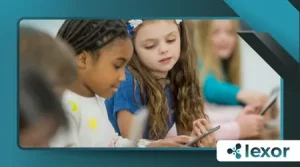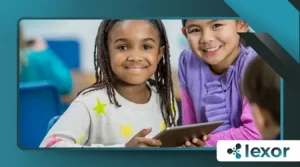How to Introduce Coding to Kids Under 6

The digital fluency required in our increasingly technological world makes one wonder: How to Introduce Coding to Kids Under 6 effectively and playfully?
It’s a question many parents and educators grapple with, recognizing the immense cognitive benefits that early exposure to computational thinking offers.
Early childhood is a critical window for developing essential skills like problem-solving, logical reasoning, and creativity.
Introducing these concepts now isn’t about creating professional programmers overnight, but rather nurturing a foundational understanding of how the digital world operates.
Why is Early Coding Exposure Important for Preschoolers?
The foundations of coding are much simpler than many assume. Before syntax and complex algorithms, the core lies in sequential thinking and pattern recognition.
Young children are naturally curious explorers of cause and effect. Coding activities simply formalize this innate drive, offering structured ways to test hypotheses.
Engaging with fundamental computational concepts builds strong neurological pathways. It enhances their ability to break down complex issues into smaller, manageable parts.
This skill, crucial in coding, translates into improved academic performance across all subjects.
What are the Foundational Concepts of Pre-Coding?

Pre-coding is about abstract thinking and giving instructions. Think of it as developing the mental muscle before lifting weights.
Read more: How Law Enforcement Is Training with Virtual Reality
Concepts like sequencing, loops, and conditions can be taught without any screens or complex software.
Understanding “first, then, next” is the bedrock of sequential logic. Activities that reinforce this order are invaluable. Recognizing patterns in colors, shapes, or sounds strengthens algorithmic thinking.
How Can Screen-Free Activities Teach Coding Principles?
Teaching coding doesn’t necessitate hours of screen time. In fact, many of the best methods are rooted in hands-on, tangible play.
++Top Tech Tools for Teaching Toddlers at Home
Physical games and everyday routines offer rich opportunities for learning.
Consider the “Robot Game,” a simple, powerful example. One child is the “robot,” and the other is the “programmer,” giving clear, step-by-step instructions.
“Take three steps forward, turn left, pick up the block.” The robot must execute the sequence exactly.
++Virtual Field Trips for Preschool: Tools and Tips
This playful interaction vividly demonstrates the need for precise commands, mirroring a computer’s need for accurate code.
Which Educational Toys Best Support Early Coding?
A variety of accessible, age-appropriate toys exist to bridge play and learning. These tools often use tactile feedback to make abstract concepts concrete.
Programmable floor robots, like Bee-Bot or Code-a-Pillar, allow children to physically plan a path.
Read more: Want to teach your kids to code? Here are three apps that can help.
These tools transform learning into a fun, interactive challenge. Children physically enter a sequence of directions and watch the robot execute the code.
Immediate feedback, whether successful or requiring a debug, is a key learning mechanism.
When is the Right Time to Introduce Block-Based Coding Apps?
Once foundational concepts are established, introducing block-based coding environments can be beneficial.
These visual tools use drag-and-drop blocks instead of text, eliminating frustrating syntax errors. ScratchJr, developed by the MIT Media Lab, is an excellent, widely used example.
This visual approach allows children to focus on logic and narrative. They can program interactive stories and games, bringing their imaginative worlds to life.
It serves as a natural progression from physical manipulatives to the digital realm.
What is the Role of Parental and Educator Guidance?
Adult involvement is critical in maximizing the educational value of these activities. Guidance shouldn’t be about solving the problem for them, but rather asking leading questions.
“What do you think will happen if you change that block?” encourages independent debugging.
The primary goal is to foster a growth mindset, where mistakes are viewed as learning opportunities.
Analogically, learning to code at this age is like learning to read a map; it provides a framework for navigating new territory. We are not just teaching them technology; we are teaching them to think.
Does Early Coding Education Correlate with Future Success?
Research strongly supports the benefits of early computational thinking.
A 2023 study published in the Journal of Educational Psychology highlighted that preschool children engaged in systematic coding activities demonstrated significantly higher scores in mathematical problem-solving skills compared to control groups.
This suggests a powerful transfer effect from logical coding structures to other cognitive domains.
| Skill Developed | How Coding Nurtures It | Example in Daily Life |
| Sequencing | Ordering steps for a desired outcome | Following a recipe or getting dressed |
| Debugging | Identifying and correcting errors in logic | Finding a missing piece in a puzzle |
| Abstraction | Focusing on the big idea, ignoring details | Summarizing a story or concept |
This educational approach is about preparing children not for specific jobs, but for a future defined by rapid change.
How to Maintain Engagement and Avoid Burnout?
Keep it playful, short, and varied. Sessions should be brief, aligning with a young child’s attention span. Integrating coding logic into existing play themes is effective.
If they love building castles, introduce the logic of building a “drawbridge program.”
Avoid pushing formal learning structures too hard. Remember that the objective is exposure and enjoyment, not mastery.
If the child is having fun and being creative, the learning will naturally follow. How to Introduce Coding to Kids Under 6 truly is about embedding logic into play.
Consider this: if we teach children to read and write to understand and articulate the world, why wouldn’t we teach them the language of the future to build and design it?
How to Introduce Coding to Kids Under 6 successfully hinges on making it an extension of natural curiosity.
The most effective introduction blends structured play with open-ended exploration. Ultimately, early coding exposure is about empowering the next generation with the tools of logical creation.
Frequently Asked Questions: How to Introduce Coding to Kids Under 6
Q: Will my child spend too much time on screens if they learn coding early?
A: No, not necessarily. The most effective early coding education focuses on “unplugged” and hands-on activities first, using screens only as a tool after foundational concepts are grasped, and always in moderation.
Q: At what age is the best time to start coding?
A: Children as young as four can benefit from pre-coding activities that focus on sequencing, directionality, and problem-solving, though formal programs like ScratchJr are often best introduced around age five or six.
Q: Do I need to be a programmer to teach my child to code?
A: Absolutely not. The resources available for How to Introduce Coding to Kids Under 6 are designed for parents and educators with no prior coding experience. The focus is on playful logic, not complex syntax.
